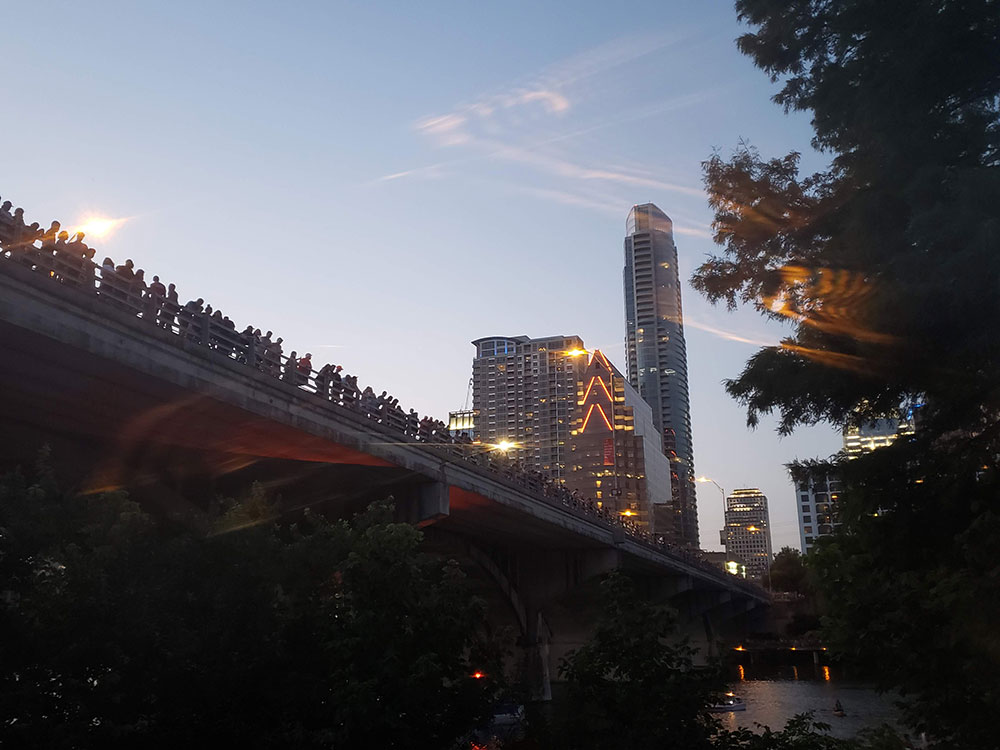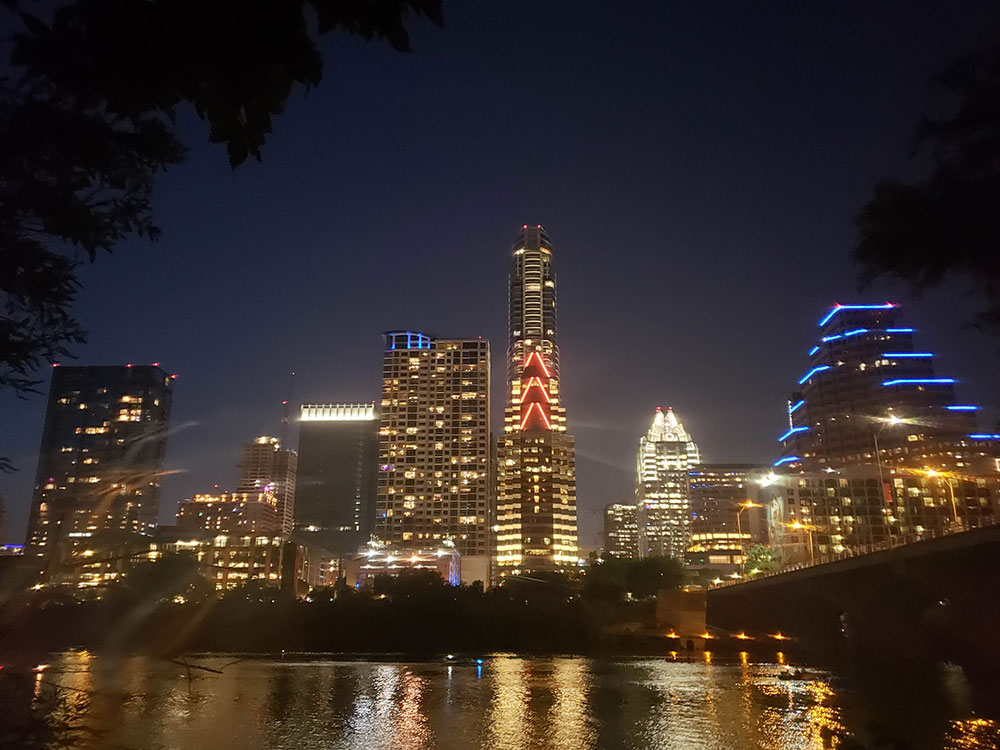Home to the world's largest urban bat colony that emerge from underneath the bridge at dusk across Lady Bird Lake attract as many as 100,000 tourists annually
General Information
Head south on Congress Ave toward E 5th St. Turn left onto Barton Springs Rd. Turn left to stay on Barton Springs Rd. Turn right.
The Ann W. Richards Congress Avenue Bridge (formerly known simply as the Congress Avenue Bridge) crosses over Lady Bird Lake in Austin, Texas. Before construction of the Longhorn Dam was completed in 1960, the bridge crossed the Colorado River from which Lady Bird Lake is impounded. The bridge was known as the Congress Avenue Bridge from the construction of the first span across the Colorado River at that location in the late 19th century until November 16, 2006, when the Austin City Council renamed the current bridge in honor of Ann W. Richards, the 45th Governor of Texas and a long-term resident of Austin. The bridge is a concrete arch bridge with three southbound and three northbound vehicle lanes and sidewalks on both sides of the bridge.
The bridge is currently home to the world's largest urban bat colony. It is a maternity colony, meaning it is a place where pregnant females come to roost in the spring and raise their pups from mid summer to fall. Until the pups are born, male bats are not under the bridge.
Ann W. Richards Congress Avenue Bridge is home to the world's largest urban bat colony, which is composed of Mexican free-tailed bats. The bats reside beneath the road deck in gaps between the concrete component structures. They are migratory, spending their summers in Austin and the winters in Mexico. According to Bat Conservation International, between 750,000 and 1.5 million bats reside underneath the bridge each summer.
In March 1986, Merlin Tuttle, founder of Bat Conservation International, resigned from his position as Curator of Mammals at the Milwaukee Public Museum in Wisconsin and relocated his fledgling conservation organization to Austin, which had been making national headline news for its urban bat population. At the time, the Congress Avenue Bridge bats were widely unpopular and the colony was at risk of extermination. Tuttle's public education campaign to save the bats through dispelling myths and misconceptions about their threats to the citizens of Austin was met with widespread skepticism and earned him the 1986 Texas Monthly Bum Steer Award. However, with help from a coalition of leaders in the Austin community, the Public Health Department, and news media, Tuttle's persistent education efforts successfully reversed public opinion about the bats and turned the Congress Avenue Bridge bat colony into the highly profitable tourist attraction for the city of Austin that it is today.
The nightly emergence of the bats from underneath the bridge at dusk, and their flight across Lady Bird Lake primarily to the east, to feed themselves, attract as many as 100,000 tourists annually. Tourists can see the bats from the bridge, from the sides of the river and from boats.
This article uses material from the Wikipedia article "Ann W. Richards Congress Avenue Bridge", which is released under the Creative Commons Attribution-Share-Alike License 3.0


